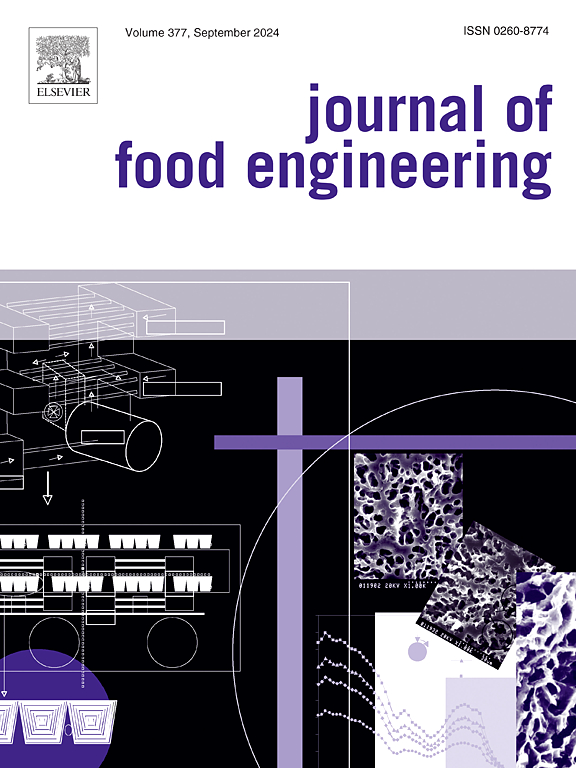纳米纤维素纤维在皮克林乳液涂料中的稳定作用
IF 5.8
2区 农林科学
Q1 ENGINEERING, CHEMICAL
引用次数: 0
摘要
从豌豆渣中分离得到纳米纤维素纤维(CNFs),并对其进行了表征,以羧甲基壳聚糖(CMCS)为固体稳定剂,蜂蜡为油相制备O/W Pickering乳液。通过调整固体稳定剂中CNFs的含量(0-0.7 wt%),证明了CNFs的添加量对皮克林乳液的储存稳定性、粒径分布和流变性能有显著影响。随着CNFs浓度的增加,乳液的稳定性和粘弹性逐渐提高,而液滴尺寸逐渐减小。CNFs的加入使乳状液液滴表面形成了更致密的界面膜,在乳状液连续相中形成了更广泛的三维网络结构,增强了乳状液的结构稳定性,减少了液滴的聚集和沉淀。此外,通过改变pH值和环境温度来测试皮克林乳剂的环境稳定性。该乳液在酸性条件下(pH 2 ~ 6)表现出良好的环境稳定性,并且能够适应较宽的温度范围(- 25 ~ 100℃)。有趣的是,在草莓表面涂布酸洗乳能有效延缓果实在贮藏过程中的失重和可滴定酸(TA)的下降。综上所述,本研究制备的皮克林乳剂在食品保鲜和包装方面具有潜在的应用价值。本文章由计算机程序翻译,如有差异,请以英文原文为准。
Nanocellulose fibers as stabilizers for Pickering emulsion coatings
Nanocellulose fibers (CNFs) were isolated and characterized from pea residue, which were combined with carboxymethyl chitosan (CMCS) as solid stabilizers, and beeswax was used as the oil phase for the preparation of O/W Pickering emulsions. By adjusting the content of CNFs in the solid stabilizer (0–0.7 wt%), it was demonstrated that the amount of CNFs added had a significant impact on the storage stability, particle size distribution and rheological properties of the Pickering emulsions. As the concentration of CNFs increased, the stability and viscoelasticity of the emulsions gradually improved, while the droplet size decreased. The addition of more CNFs led to the formation of a denser interfacial film on the surface of the emulsion droplets and created a more extensive three-dimensional network structure in the continuous phase of the emulsion, enhancing the structural stability of the emulsion and reducing droplet aggregation and sedimentation. Furthermore, the environmental stability of the Pickering emulsions was tested by altering the pH and environmental temperature. The emulsions exhibited good environmental stability in acidic conditions (pH 2 to 6), and were able to adapt to a wide temperature range (−25 to 100 °C). Interestingly, the Pickering emulsion coating applied to the surface of strawberries was effective in delaying fruit weight loss and titratable acid (TA) decline during storage. In summary, the Pickering emulsions prepared in this study have potential application value in food preservation and packaging.
求助全文
通过发布文献求助,成功后即可免费获取论文全文。
去求助
来源期刊

Journal of Food Engineering
工程技术-工程:化工
CiteScore
11.80
自引率
5.50%
发文量
275
审稿时长
24 days
期刊介绍:
The journal publishes original research and review papers on any subject at the interface between food and engineering, particularly those of relevance to industry, including:
Engineering properties of foods, food physics and physical chemistry; processing, measurement, control, packaging, storage and distribution; engineering aspects of the design and production of novel foods and of food service and catering; design and operation of food processes, plant and equipment; economics of food engineering, including the economics of alternative processes.
Accounts of food engineering achievements are of particular value.
 求助内容:
求助内容: 应助结果提醒方式:
应助结果提醒方式:


